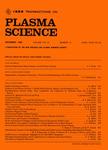版权所有:内蒙古大学图书馆 技术提供:维普资讯• 智图
内蒙古自治区呼和浩特市赛罕区大学西街235号 邮编: 010021

作者机构:Nanchang Univ Inst Space Sci & Technol Nanchang 330021 Peoples R China Mem Univ Newfoundland Dept Math & Stat St John NF A1C 5S7 Canada 1 Microsoft Way Redmond WA 98052 USA S China Univ Technol Sch Elect & Informat Engn Guangzhou 510641 Guangdong Peoples R China
出 版 物:《IEEE TRANSACTIONS ON PLASMA SCIENCE》 (IEEE Trans Plasma Sci)
年 卷 期:2016年第44卷第6期
页 面:1025-1031页
核心收录:
学科分类:0808[工学-电气工程] 08[工学] 0702[理学-物理学]
基 金:Fundamental Research Funds for the Central Universities [2014ZZ0039] Specialized Research Fund for the Doctoral Program of Higher Education Natural Science Foundation of Jiangxi Province [2014BAB202008] National Natural Science Foundation of China [41464007, 61201178] Educational Foundation of Jiangxi Province [GJJ13050]
主 题:Delaunay triangulation virtual force algorithm wireless sensor networks Yukawa system crystallization
摘 要:In modern information technology, mobile sensor networks (MSNs) play an important role in industrial or military applications, so sensor deployment is a key issue in MSN research. Based on wireless communication theory, hexagonal topology is known to provide the best field coverage, limited nodes, and minimal system cost. In the 2-D dusty plasma physical system, plasma particles are capable of forming a good hexagonal structure based on Yukawa system crystallization. Therefore, this strategy can be applied to node deployment algorithm in MSN applications. For this paper, we used a 2-D dusty plasma simulation in order to provide node deployment for a large sensor network, and, for better performance evaluations, adopted the Delaunay triangulation in order to determine adjacent particles of a given dust particle. Sensor deployment distributions and system performance were carefully examined by considering various values for the shielding length and the computation scale in simulations. Here, we discuss the influence of the shielding rule in Yukawa system crystallization on sensor deployment applications. Our results indicate that the algorithm leads to better field coverage with perfect hexagonal topology, good system uniformity, and lower energy consumption, and can be considered as an aid for fast deployment experiments when thousands of wireless sensors are required within a large-scale area.